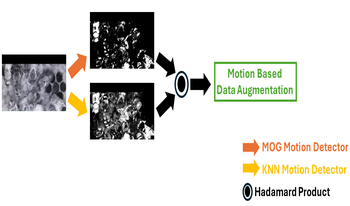
In this paper, we address the task of detecting honey bees inside a beehive using computer vision with the goal of monitoring their activity. Conventionally, beekeepers monitor the activities of honey bees by watching colony entrances or by opening their colonies and examining bee movement and behavior during inspections. However, these methods either miss important information or alter honey bee behavior. Therefore, we installed simple cameras and IR lighting into honey bee colonies for a proof of concept study whether deep-learning techniques could assist in-hive observations. However, the lighting conditions across different beehives are diverse, which leads to varied appearances of both the beehive backgrounds and the honey bees. This phenomenon significantly degrades the performance of detection using Deep Neural Networks. In this paper, we propose to apply domain randomization based on motion to train honey bee detectors for inside the beehive. Our experiments were conducted on the images captured from beehives both seen and unseen during training. The results show that our proposed method boosts the performance of honey bee detection, especially for small bees which are more likely to be affected by the lighting conditions.
Chih-Hsing Ho, Izaak R. Gilchrist, Keirstyn A Amponsah, Amanda Stoltz, Brock A. Harpur, Steve Cantley, Amy R. Reibman, "Motion-Based Domain Randomization for Detecting Honey Bees Inside a Hive" in Electronic Imaging, 2024, pp 240-1 - 240-6, https://doi.org/10.2352/EI.2024.36.8.IMAGE-240
 Find this author on Google Scholar
Find this author on Google Scholar Find this author on PubMed
Find this author on PubMed